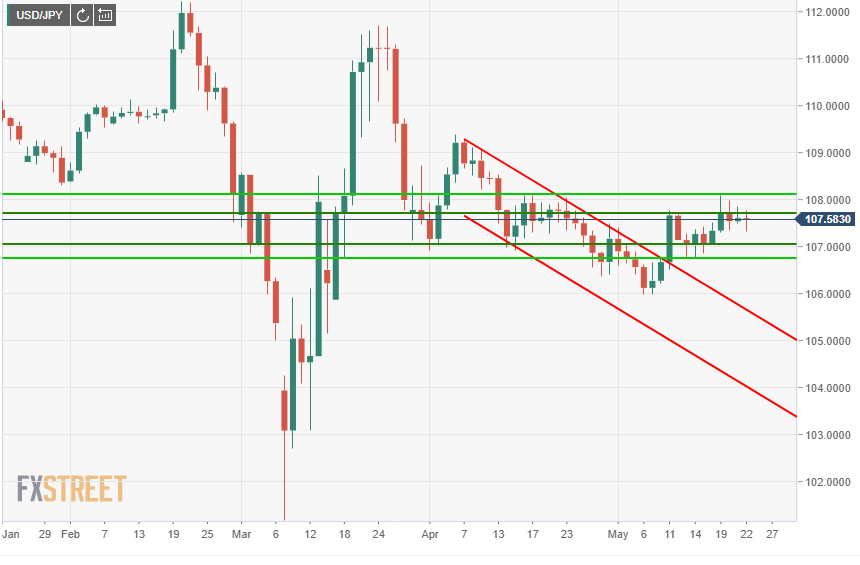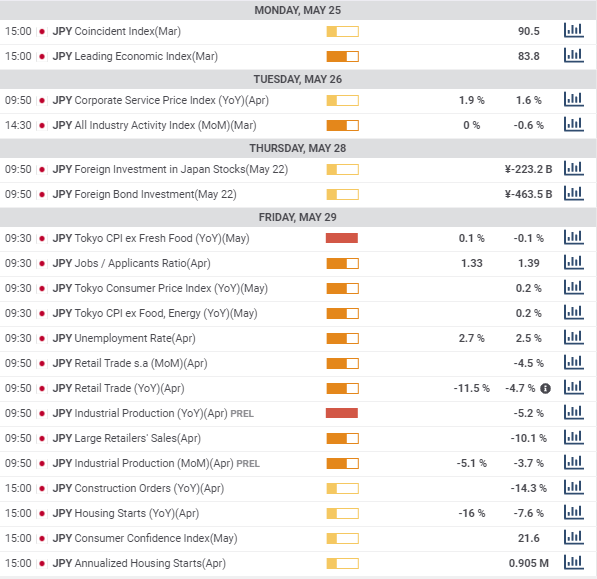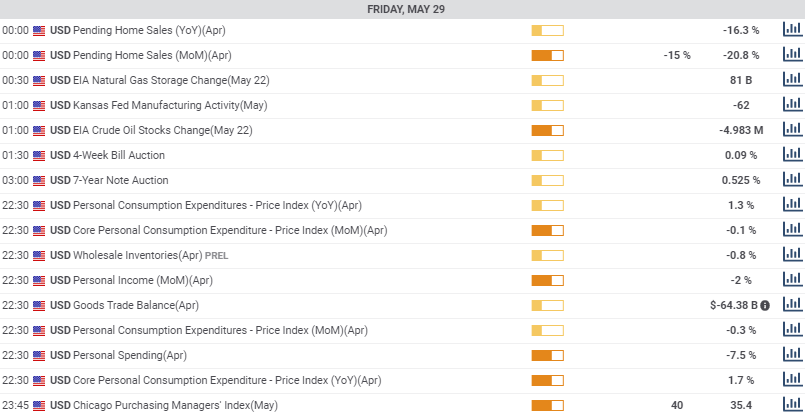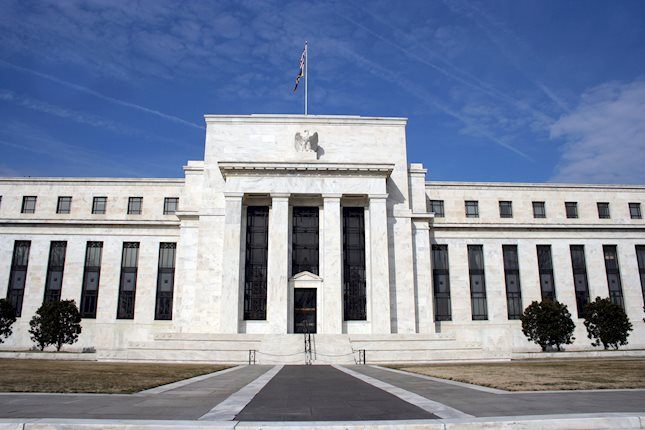- US China tensions rise over trade, pandemic and Hong Kong.
- USD/JPY technical reversal on May 11 confirmed.
- Why did the Bank of Japan meet on Friday?
The USD/JPY consolidated its breakout this week as tensions between the US and China over a variety of topic bolstered the dollar against the yen in a mild return to risk-aversion pricing.
Washington and Beijing engaged in a war of words over the origin and responsibilities for the coronavirus, while the US Senate passed a bill that could restrict mainland companies from listing on American exchanges and China proposed a strict new security law for Hong Kong that would permit its agents to operate freely in the former British colony.
Countering the political disputes were generally positive developments in the pandemic as many US states and European countries continued to loosen restrictions with no adverse effects and several vaccines have shown promising results.
The emergency or at least unscheduled Bank of Japan meeting on Friday produced no results other than a headline. The governors held the cash rate at -0.1% and offered no new stimulus measures.
USD/JPY outlook
Currencies have not shaken the lingering effects of the great March and April pandemic panic but risk-aversion is being driven more by secondary effects like the US-China rhetoric on virus responsibility-the origin is not in dispute-and its spillover into trade and politics. In Hong Kong Beijing is using the pandemic distraction to tighten control on the city and end the one country, two systems policy of the last two decades.
Since the break of the four-week old channel on May 11 the USD/JPY has kept a tight limit of 107.00-107.75 on the daily open and close and 106.80 to 108.85 on the overall range. The USD/JPY opened at 107.04 on Monday and finished the week at 107.59.
The pandemic risk-premium is being replaced by more conventional worries over US-China trade and Pacific Basin politics but the impact on currencies is similar with risk driving toward the US dollar.
The relative balance between risk and optimism of the past two weeks will not hold and the next move will be determined by whether the burgeoning conflict with China or the global economic recovery becomes the dominant motif.
 Japanese and US statistics summary May 18-May 22
Japanese and US statistics summary May 18-May 22
Japanese statistics confirmed that the economy entered its fourth recession in the past decade as annualized GDP contracted 3.4% in the first quarter following the revised 7.3% decline in the final three months of 2019.. April exports plunged on the year as expected though imports dropped less than forecast.
In the United States jobless claims continued to shrink with 2.4 million filed in the latest week but with a total of almost 39 million in the past nine weeks and over 25 million continuing claims improvement would be the wrong description. There is as yet no sign of returning employment reducing the jobless rolls. The IHS Markit preliminary PMI surveys for May were better than expected though still deep in contraction, suggesting that a bottom for the economy may have been reached.
There is little to choose between the pandemic economic collapse in the two countries, and though the Markit PMI may hold promise for the US other statistics likely will not. The Atlanta Fed GDPNow model for the second quarter is -41.9%.
The original quote for the title is from Satchel Paige, the American baseball player, “Don’t look back. Something might be gaining on you.”
Japan statistics May 18-May 22
Monday
First quarter annualized GDP dropped 3.4%, less than the -4.6% expected but following on the fourth quarter’s 7.3% decline, Japan entered its fourth recession since the financial crisis. On the quarter the economy contracted 0.9% on a 1.2% forecast after dropping 1.9% in the final three months of last year.
The Tertiary Index that tracks the service sector dropped 4.2% in March, much worse than the expected 0.2% gain and February’s 0.5% loss.
Tuesday
Industrial production for March was unrevised at -5.2% for the year and -3.7% for the month as predicted after dropping 5.7% and -0.3% respectively in February.
Machinery orders dropped 0.4% in March, far better than the -7.1% projection and 0.7% for the year also much less than its -9.5% estimate. Monthly orders were 2.3% higher in February and 2.4% lower on the year.
Wednesday
April imports declined 7.2%, improving on the 12.9% forecast but making 12 negative months in a row. Exports plunged 21.9%, close to the -22.7 forecast but the largest drop since the financial crisis and one month shy of a-year-and-a half of declines.
Thursday
National CPI (ex-fresh food) fell 0.2% in April y/y missing the -0.1% forecast after rising 0.4% in March. National COI (ex food and energy) rose 0.2% on the year following a 0.6% gain in March.
The Bank of Japan kept the overnight cash rate at -0.1%, at its emergency meeting where it has been since January 2016. The bank announced a new lending program worth 30 trillion yen ($279 billon) to support small businesses but did not add any general economic stimulus.
US statistics May 18-May 22
Monday
The National Association of Home Builders Index for May, an indicator of future growth in housing, came in at 37, better than the 33 forecast and the April reading of 30 which had been the lowest since June 2012.
Thursday
Initial jobless claims were 2.438 million in the May 15 week, 2.4 million were forecast. Continuing claims were 25.073 million slightly above the 24.765 million and a 2.525 million increase. In the past nine weeks 38.615 million people have claimed unemployment insurance.
Existing home sales plummeted 17.8% in April, not quite as much as the 18.9% prediction and the 4.33 million annualized selling rate retreated to just above the post-crash low of 3.83 million of July 2010.
HIS Markit’s preliminary PMI surveys for May were 36.4 for the composite, up from 27 in April, 39.8 in manufacturing from 36.1 and 36.9 in services from 26.7. All the April reading were the lowest for the approximately 10-year old survey.
 Japan statistics May 25-May 29
Japan statistics May 25-May 29
 US statistics May 25-May 29
US statistics May 25-May 29

 USD/JPY technical outlook
USD/JPY technical outlook
The relative strength index (RSI) is nearly neutral at 50 as would be expected after a week of limited movement, giving little indication of potential. The 21-day moving average is also flat and resting at 107.07 adds to the107.00 support line. The 100-day average at 108.43 is essentially part of the 108.55 resistance line as is the slightly more distance 200-day average at 108.31. The cross of the 21-day average on Monday lends a minor upward cast to the USD/JPY.
Resistance: 107.75; 108.00; 108.55; 109.25: 109.65
Support: 107.35; 107.00; 106.70; 106.30; 106.00
USD/JPY sentiment poll
Despite the strongly bearish cast in the near term the forecast at 107.35, just 25 points under the Friday close is weak. The same could be said for the one month and one quarter views. The clear lack of predictive movement in the forecasts betrays the current lack of direction in the USD/JPY. Or to put it another way, the pair is still subject to developments beyond the ken of charting analysis.
Information on these pages contains forward-looking statements that involve risks and uncertainties. Markets and instruments profiled on this page are for informational purposes only and should not in any way come across as a recommendation to buy or sell in these assets. You should do your own thorough research before making any investment decisions. FXStreet does not in any way guarantee that this information is free from mistakes, errors, or material misstatements. It also does not guarantee that this information is of a timely nature. Investing in Open Markets involves a great deal of risk, including the loss of all or a portion of your investment, as well as emotional distress. All risks, losses and costs associated with investing, including total loss of principal, are your responsibility. The views and opinions expressed in this article are those of the authors and do not necessarily reflect the official policy or position of FXStreet nor its advertisers. The author will not be held responsible for information that is found at the end of links posted on this page.
If not otherwise explicitly mentioned in the body of the article, at the time of writing, the author has no position in any stock mentioned in this article and no business relationship with any company mentioned. The author has not received compensation for writing this article, other than from FXStreet.
FXStreet and the author do not provide personalized recommendations. The author makes no representations as to the accuracy, completeness, or suitability of this information. FXStreet and the author will not be liable for any errors, omissions or any losses, injuries or damages arising from this information and its display or use. Errors and omissions excepted.
The author and FXStreet are not registered investment advisors and nothing in this article is intended to be investment advice.
Recommended Content
Editors’ Picks

EUR/USD stabilizes near 1.0500 ahead of Fed rate call
EUR/USD fluctuates in a narrow range at around 1.0500 in on Wednesday. The pair's further upside remains capped as traders stay cautious and refrain from placing fresh bets ahead of the Federal Reserve's highly-anticipated policy announcements.

GBP/USD holds above 1.2700 after UK inflation data
GBP/USD enters a consolidation phase above 1.2700 following the earlier decline. The data from the UK showed that the annual CPI inflation rose to 2.6% in November from 2.3%, as expected. Investors gear up for the Fed's monetary policy decisions.

Gold stays at around $2,650, upside remains limited with all eyes on Fed
Gold is practically flat near $2,650 on Wednesday after bouncing up from a one-week low it set on Tuesday. The precious metal remains on the defensive as the market braces for the outcome of the last Federal Reserve’s (Fed) meeting of the year.

Federal Reserve set for hawkish interest-rate cut as traders dial back chances of additional easing in 2025
The Federal Reserve is widely expected to lower the policy rate by 25 bps at the last meeting of 2024. Fed Chairman Powell’s remarks and the revised dot plot could provide important clues about the interest-rate outlook.

Sticky UK services inflation to come lower in 2025
Services inflation is stuck at 5% and will stay around there for the next few months. But further progress, helped by more benign annual rises in index-linked prices in April, should see ‘core services’ inflation fall materially in the spring.

Best Forex Brokers with Low Spreads
VERIFIED Low spreads are crucial for reducing trading costs. Explore top Forex brokers offering competitive spreads and high leverage. Compare options for EUR/USD, GBP/USD, USD/JPY, and Gold.